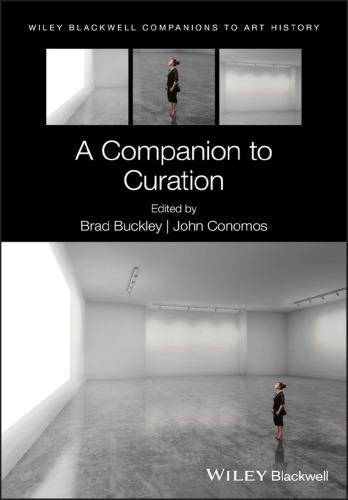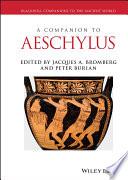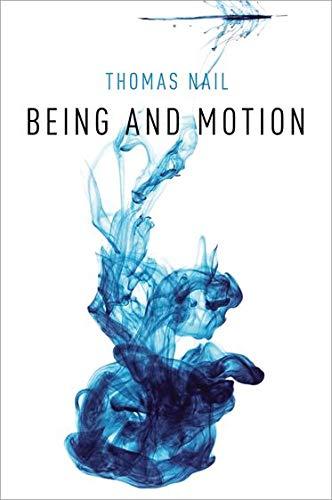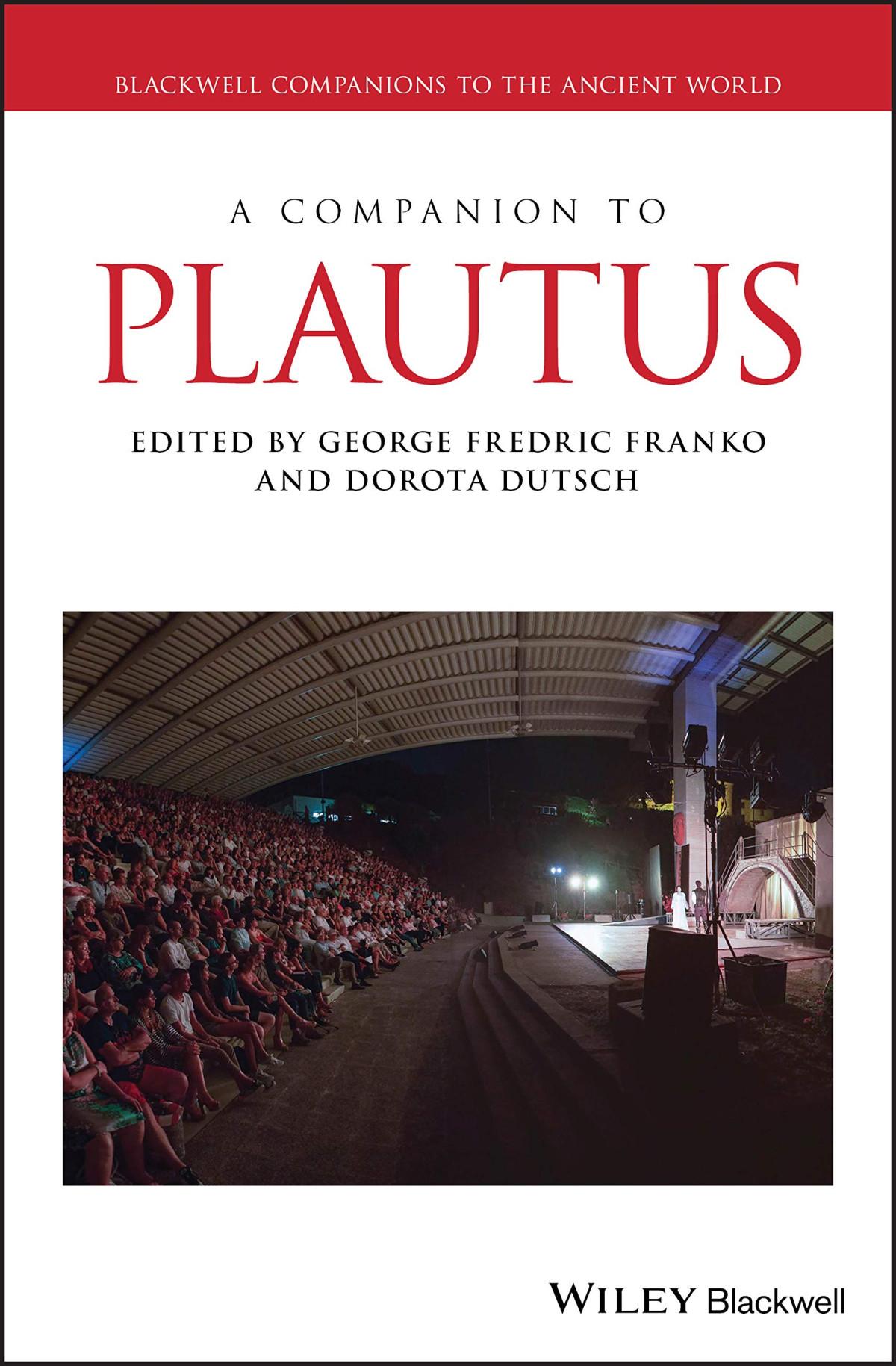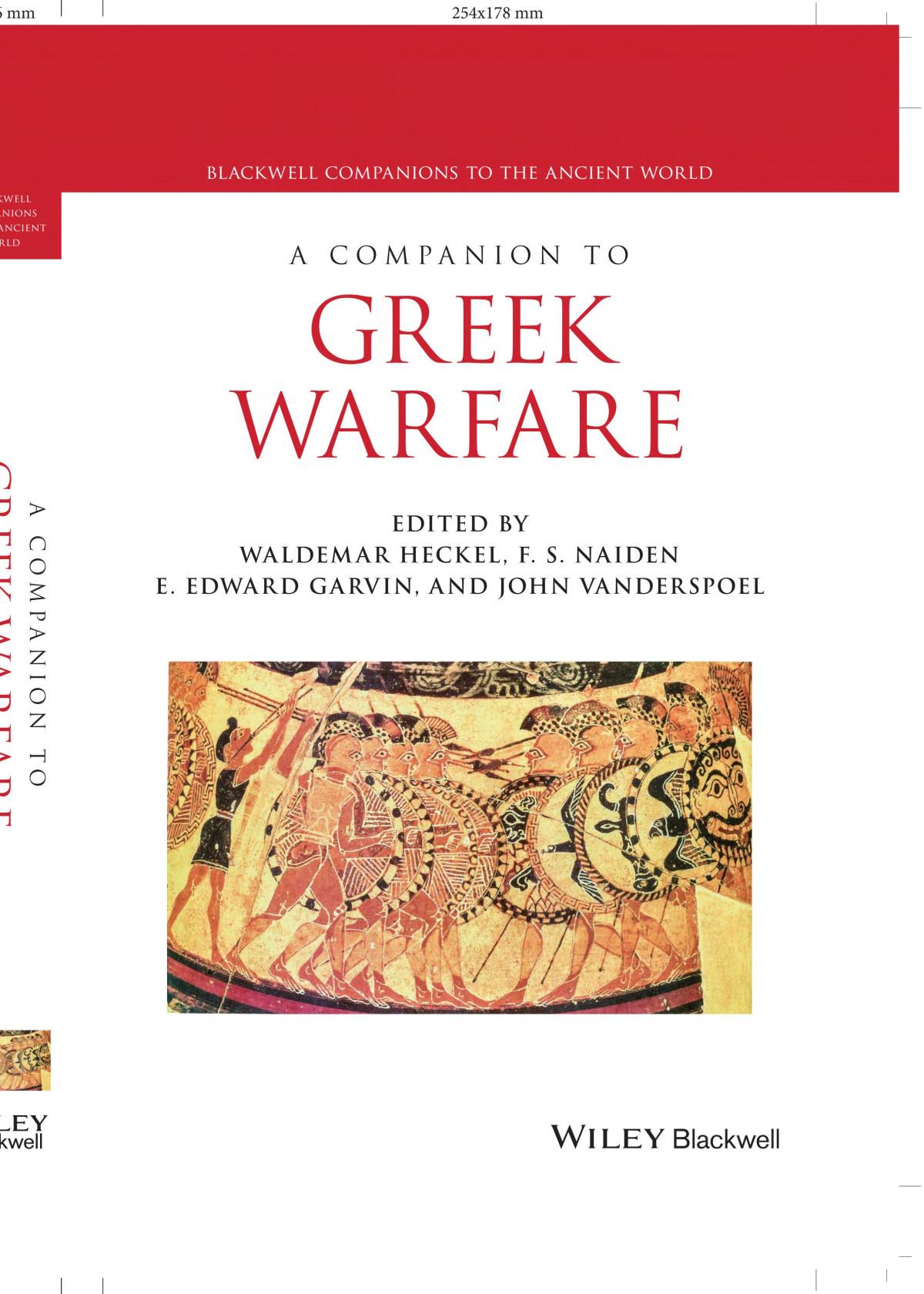A Companion to Motion Pictures and Public Value
Edited by Mette Hjort and Ted Nannicelli
This edition first published 2022
© 2022 John Wiley & Sons Ltd
All rights reserved. No part of this publication may be reproduced, stored in a retrieval system, or transmitted, in any form or by any means, electronic, mechanical, photocopying, recording or otherwise, except as permitted by law. Advice on how to obtain permission to reuse material from this title is available at http:// www. wiley. com/go/permissions
The right of Mette Hjort and Ted Nannicelli to be identified as the authors of the editorial material in this work has been asserted in accordance with law
Registered Offices
John Wiley & Sons, Inc., 111 River Street, Hoboken, NJ 07030, USA
John Wiley & Sons Ltd, The Atrium, Southern Gate, Chichester, West Sussex, PO19 8SQ, UK
Editorial Office
The Atrium, Southern Gate, Chichester, West Sussex, PO19 8SQ, UK
For details of our global editorial offices, customer services, and more information about Wiley products visit us at www.wiley.com
Wiley also publishes its books in a variety of electronic formats and by print-on-demand. Some content that appears in standard print versions of this book may not be available in other formats
Limit of Liability/Disclaimer of Warranty
While the publisher and authors have used their best efforts in preparing this work, they make no representations or warranties with respect to the accuracy or completeness of the contents of this work and specifically disclaim all warranties, including without limitation any implied warranties of merchantability or fitness for a particular purpose. No warranty may be created or extended by sales representatives, written sales materials or promotional statements for this work. The fact that an organization, website, or product is referred to in this work as a citation and/or potential source of further information does not mean that the publisher and authors endorse the information or services the organization, website, or product may provide or recommendations it may make. This work is sold with the understanding that the publisher is not engaged in rendering professional services. The advice and strategies contained herein may not be suitable for your situation. You should consult with a specialist where appropriate. Further, readers should be aware that websites listed in this work may have changed or disappeared between when this work was written and when it is read. Neither the publisher nor authors shall be liable for any loss of profit or any other commercial damages, including but not limited to special, incidental, consequential, or other damages.
Library of Congress Cataloging-in-Publication Data
Names: Hjort, Mette, author. | Nannicelli, Ted, author
Title: A Companion to Motion Pictures and Public Value / edited by Mette Hjort and Ted Nannicelli
Description: Hoboken : John Wiley & Sons, 2021. | Includes bibliographical references and index.
Identifiers: LCCN 2021027310 (print) | LCCN 2021027311 (ebook) | ISBN 9781119677116 (hardback) | ISBN 9781119677130 (paperback) | ISBN 9781119677079 (pdf) | ISBN 9781119677123 (epub) | ISBN 9781119677154 (ebook)
Subjects: LCSH: Motion pictures and public interest
Classification: LCC PN1995.9.P7855 C66 2021 (print) | LCC PN1995.9.P7855 (ebook) | DDC 791.43/655—dc23
LC record available at https://lccn.loc.gov/2021027310
LC ebook record available at https://lccn.loc.gov/2021027311
Cover image: © EschCollection/Getty Images
Cover design by Wiley
Set in 10.5/ 13pt Minion by Integra Software Services Pvt. Ltd, Pondicherry, India
To Tom O'Regan, in loving memory
Hjort and Ted Nannicelli
23 Narrative Sense-Making in the Service of Health— A Neurocinematic Approach
Pia Tikka
24 The Smoking Machine: Public Health Films and Public Value in Britain and Denmark, 1950-1964
C Claire Thomson
25 The Benefits of Genre: Feel-Good Films as a Path to Health and Well-Being
Mette Hjort
26 Movies in the Closed Wards: Instruments of Mental Health in Military Psychiatry
Kaia Scott
Biographical Notes
Richard Allen is chair professor of film and media art and dean of the School of Creative Media at City University, Hong Kong. He has published widely on film theory, aesthetics, and poetics. His book, Bombay Cinemas Islamicate Histories, edited with Ira Bhaskar, will be published by Intellect and Orient Blackswan early next year. He recently curated the exhibition Art Machines: Past and Present at City University exhibition gallery (catalogue: City University Press)
Roy Anker is professor emeritus of English at Calvin University. His most recent book is Beautiful Light: Religious Meaning in Film (2017)
Jamie Chambers is a lecturer in film and television at Edinburgh College of Art (University of Edinburgh). Alongside his research into the global possibilities of a folk cinema he is an award-winning film director, having made a series of films about community folk cultures in Scotland including When the Song Dies (2013) and Blackbird (2014). He is the founder and curator of the Folk Film Gathering (folkfilmgathering.com), the world s first film festival of folk cinema.
Paul Cooke is centenary chair of world cinemas at the University of Leeds and has published widely on the cultural politics of contemporary film. He is currently the Principal Investigator on Changing the Story: Building Civil Society with and for Young People in Post Conflict Settings, a project looking at the ways in which heritage and arts organizations can help young people to shape civil society in postconflict countries. He is also co-lead of “Community Engagement for AMR” at the University of Leeds, a project that seeks to use participatory practices to unlock community-level knowledge in order to overcome antimicrobial resistance, one of the largest public health issues we face as a planet He has also run numerous advocacy-focused participatory video projects, working with communities in the United Kingdom, Germany, Kenya, Nepal, Cambodia, India, and Colombia.

Jared Del Rosso is an associate professor in the department of sociology and criminology at the University of Denver He researches and teaches on denial, with a specific focus on the collective denial of torture His work in this area has been published in Social Forces, Sociological Forum, and Social Problems. He also published a book on the denial of torture, Talking About Torture: How Political Discourse Shapes the Debate, with Columbia University Press. He is currently writing a new book on the sociology of denial, which is under contract with New York University Press
John Nguyet Erni is Dean of the Faculty of Humanities and Chair Professor of Cultural Studies at The Education University of Hong Kong. He is an elected fellow of the Hong Kong Academy of the Humanities, and an elected corresponding fellow of the Australian Academy of the Humanities. In 2017-2018, Erni served as president of the Hong Kong Academy of the Humanities. A recipient of the Gustafson, Rockefeller, Lincoln, and Annenberg research fellowships, and many other awards and grants, Erni s wide-ranging work traverses international and Asia-based cultural studies, human rights legal criticism, Chinese consumption of transnational culture, gender and sexuality in media culture, youth consumption culture in Hong Kong and Asia, cultural politics of race/ethnicity/migration, and critical public health. He is the author or editor of 9 academic titles, most recently Law and Cultural Studies: A Critical Rearticulation of Human Rights (2019), and Visuality, Emotions, and Minority Culture: Feeling Ethnic (2017)
Ann Hardy is a senior lecturer in the screen and media studies Program at Waikato University, Hamilton, whose research explores how intersections between media, religion, and culture are creating new identities in contemporary New Zealand. From 2016 to 2019 Hardy was an investigator on the Royal Society’s Marsden Fund Project Te Maurea Whiritoi: the sky as a cultural resource - Maori astronomy, ritual and ecological knowledge, outputs from which included curating a section of the Te Whaanau Maarama (Family of Light) exhibition on the recent resurgence of the indigenous celebrations of the rising of the Matariki constellation in winter. She also has an interest in audiences for popular culture and was one of four authors of the 2017 volume Fans, Blockbusterization and the Transformation of Cinematic Desire: Global Receptions of the Hobbit Film Trilogy (Palgrave Macmillan)
Mette Hjort is chair professor of humanities and dean of arts at Hong Kong Baptist University, affiliate professor of Scandinavian studies at the University of Washington, and visiting professor of cultural industries at the University of South Wales Hjort holds an honorary doctorate in transnational cinema studies from the University of Aalborg and has served on the board of the Danish Film Institute (appointed by the Danish Ministry of Culture). Her current research focuses on moving images as they relate to public value in the context of health and well-being.
Biographical Notes
Pietari Kaapa is a reader in media and communications at University of Warwick. He is a specialist in environmental screen media, focusing especially on environmental media production, policies, practices, and content (especially film and television). He has published widely in the field, including Environmental Management of the Media (Routledge 2018) and Ecology and Contemporary Nordic Cinemas (Bloomsbury 2014). He also works on media industry studies, especially in relation to Nordic film and television. Publications include The Politics of Nordsploitation (with Tommy Gustafsson, Bloomsbury 2021) and Nordic Genre Film (with Tommy Gustafsson, Edinburgh University Press 2015). He is an editor of Journal of Scandinavian Cinema and a docent (affiliate professor) in film and television studies at the University of Helsinki. He is principal investigator (with Hunter Vaughan) of the AHRC Network on Global Green Media Production (https:// globalgreenmedianetwork. com/)
Paisley Livingston (BA, philosophy, Stanford University, PhD The Humanities Center, The Johns Hopkins University) is professor emeritus of philosophy at Lingnan University in Hong Kong. He taught previously at the University of Copenhagen, Aarhus University, and McGill University. He has published various papers and books in aesthetics, including Art and Intention (Oxford University Press 2005), “History of the Ontology of Art” (Stanford Encyclopedia of Philosophy), and Cinema, Philosophy, Bergman (Oxford University Press 2009)
Anne Ahn Lund is co-founder of Jordnaer Creative and Nordic Eco Media Alliance (NEMA) She is teaching creative sustainability in the Nordic countries, has trained production assistants and runners in sustainable practices, and has presented recommendations directly to the Danish Minister of Culture. Lund is a filmmaker and has taught film production practices at University of Copenhagen and The Royal Academy of Fine Arts. She holds an MA in film studies with a focus on embodied aesthetics.
Josefine Madsen founded Jordnaer Creative in 2017 to fight for climate action and social justice in the creative industries. She has put the climate footprint of the cultural sector on the Danish public agenda with appearances and press coverage in national radio as well as news media Madsen is also a co-founding member of Nordic Eco Media Alliance (NEMA). She holds a BA and an MA in film and media studies from the University of Copenhagen, and specialized in sustainable film and TV production as the first Danish student to do so. Furthermore, Madsen has worked with documentaries and film financing.
Ruth McElroy is professor of creative industries and faculty head of research at the University of South Wales She is co-director with professor Lisa Lewis of the Centre for the Study of Media and Culture in Small Nations In public life, McElroy is chair of Ffilm Cymru Wales and a member of Ofcom’s Advisory Committee Wales She helps inform media policy through her membership of the Institute of Welsh Affairs Media Policy Group. McElroys main research interests are in film and TV
studies, media policy and cultural identity with a particular interest in minoritylanguage media
Dooley Murphy is an audiovisual media researcher poised to receive his PhD from the University of Copenhagen, Department of Communication. His recentlycompleted doctoral thesis addresses the form and function of interactive virtual reality (VR) artworks from a cognitive-analytic perspective, with a particular focus on manifestations of narrative. He has published on video game player and VR participant experience, the structure and process of audiovisual narration, and design strategies in interactive storytelling. His next avenue of research will likely be avatars, characters, and virtual embodiment In his spare time, he likes to make media art about the wonderful mundanity of technology and culture
Ted Nannicelli teaches at the University of Queensland. His most recent books are Artistic Creation and Ethical Criticism (Oxford University Press, 2020) and Truth in Visual Media: Aesthetics, Ethics Politics (co-edited with Marguerite La Caze, Edinburgh University Press, 2021). He is the editor of Projections: The Journal for Movies and Mind.
Dr. Caitriona Noonan is senior lecturer in media and communication in the School of Journalism, Media and Cultural Studies, Cardiff University. She is an active researcher in the areas of film and television production, creative labor, and cultural policy. She is co-author of the book Producing British Television Drama Local Production in a Global Era (2019) with Ruth McElroy. More information about her research is available at smallnationsscreen.org.
Tom O’Regan was a key figure in the development of cultural and media studies in Australia. His major works include Australian Television Culture (1993), Australian National Cinema (1996), The Film Studio: Film Production in the Global Economy (2005, with Ben Goldsmith), Local Hollywood: Global Film Production and the Gold Coast (2010, with Ben Goldsmith and Susan Ward), and Rating the Audience: The Business of Media (2011, with Mark Balnaves and Ben Goldsmith) He co-founded Continuum: Journal for Media & Cultural Studies and edited it between 1987 and 1994. In addition to his prolific and influential research output, Professor O’Regan held a series of key leadership roles throughout his career He was director of the Centre for Research in Culture and Communication from 1996 to 1998 at Murdoch University and Director of the Australian Key Centre for Cultural and Media Policy at Griffith University from 1999 to 2002. He was Australia’s UNESCO professor of communication from 2001 to 2003 and elected a fellow of the Australian Academy of the Humanities in 2002.
Glenn Parsons is an associate professor of philosophy at Ryerson University in Toronto. His interests include aesthetics, metaphysics, and the philosophy of science His book Aesthetics and Nature (Bloomsbury 2008) is currently being revised for a new edition.
Biographical Notes
Dr Karen Pearlman is a senior lecturer in screen practice and production at Macquarie University and the author of Cutting Rhythms (Focal Press 2016) Her research into creative practice, distributed cognition, and feminist film histories has produced a number of published articles and chapters, and three award winning short films about Soviet women filmmakers in the 1920s and the 1930s. The third of this trilogy, I want to make a film about women (2019), the case study for the chapter in this volume, was long-listed for an Oscar, short-listed for an Australian Academy of Cinema and Television Arts Award, and has won three best directing awards (from the Australian Directors’ Guild, Women in Film and Television Australia, and Cinefest Oz), along with 10 other nationally competitive awards.
Carl Plantinga is Arthur H De Kruyter chair of communication at Calvin University. His two latest books are Alternative Realities (2020) and Screen Stories: Emotion and the Ethics of Engagement (2018). He is also co-editor of Passionate Views: Film, Cognition, and Emotion (1999) and The Routledge Companion to Philosophy and Film (2009) He is former president of the Society for Cognitive Studies of the Moving Image (SCSMI)
Anna Potter is an associate professor of creative industries at the University of the Sunshine Coast She is a researcher focusing on children’s screen production cultures and distribution networks, media industries, and communication policy. She is the author of Creativity, Culture, and Commerce: Producing Australian Childrens Television with Public Value (Intellect 2015), Producing Childrens Television in the On-Demand Age (Intellect 2020) and multiple journal articles and book chapters Potter is chief investigator (with Amanda Lotz and Kevin Sanson) on the Australian Research Council Discovery project (2021-2023) “Making Australian Television in the 21st Century.” This project investigates the intertwined implications of non-Australian ownership, technological adjustments, policy changes, and support adjustments enacted since the mid-2000s that have challenged the making of “Australian” television.
Willemien Sanders is a lecturer at the department of media and culture studies and an affiliated researcher at the Institute for Cultural Inquiry at Utrecht University. She also conducts research at the Netherlands Institute for Sound and Vision. Her research interests include, but are not limited to, documentary film and non-fiction, film and television production, and digital humanities/data studies with a focus on questions of ethics, production cultures, and gender She is currently a co-chair of the Media Production Analysis Working Group of International Association for Media and Communication Research. She is also an avid traveler.
Kaia Scott holds a PhD in film and moving image studies from Concordia University in Montreal, Quebec Her dissertation, Picturing the Damaged Mind: Film and Techniques of Visualization in the Modernization of World War II Military Psychiatry is a critical history of the role of media in the modernization of the United States
military’s psychiatry program during World War II. She specializes in institutional visual culture and is a contributing author to Cinemas Military Industrial Complex
Khatereh Sheibani is a scholar, author, and curator of Iranian cinema and Persian literature and culture She has established multiple courses in Persian studies (language, literature, and culture) at York University, where she is working as a lecturer Sheibani completed her doctorate degree in comparative literature and film studies at the University of Alberta, Canada in 2007. Her book entitled The Poetics of Iranian Cinema: Aesthetics, Modernity, and Film after the Revolution was published in November 2011 by I B Tauris, United Kingdom She has co-edited a special issue of Iran Namag on Abbas Kiarostami (University of Toronto Press 2018) Sheibani has written articles on modern Persian literature, Iranian cinema and Middle Eastern cinemas in literary and film anthologies and journals, such as Iranian Studies and Canadian Journal of Film Studies. She is collaborating with Iran Namag for a special issue on radio to be published in 2022. She has written two novels (in Persian) so far The first novel titled Hotel Iran will be published in 2021 by Nashr-e Ameh in Tehran. Her second novel, Blue Bird Cafe is going to be published in Europe in 2021. Sheibani was consulted and interviewed on issues regarding Iranian cinema by broadcasting services and journals such as CBC, PRI, and the New York Times. She is currently working on a book-length project on gender representation in Iranian cinema
Dr. Meryl Shriver-Rice is a media anthropologist and environmental archaeologist, and director of environmental media at the Abess Center for Ecosystem Science and Policy at the University of Miami She developed and teaches for the Master’s of Environment, Media, and Culture program and is a founding editor (with Hunter Vaughan) of the Journal of Environmental Media (Intellect Press).
Robert Sinnerbrink is associate professor of philosophy at Macquarie University, Sydney, Australia. He is the author of New Philosophies of Film (Second Edition): An Introduction to Cinema as a Way of Thinking (Bloomsbury 2021), Terrence Malick: Filmmaker and Philosopher (Bloomsbury 2019), Cinematic Ethics: Exploring Ethical Experience through Film (Routledge 2016), New Philosophies of Film: Thinking Images (Continuum/Bloomsbury 2011), and Understanding Hegelianism (Acumen 2007, Routledge 2014). He has edited two books (Emotion, Ethics, and Cinematic Experience (Berghahn Books 2021) and Critique Today (Brill 2006)), and is a member of the editorial boards of Film-Philosophy, Film and Philosophy, and Projections: The Journal of Movies and Mind.
Professor Jane Stadler holds an honorary appointment in film and media studies at The University of Queensland, Australia She led a collaborative Australian Research Council project on landscape and location in Australian cinema, literature, and theater (2011-2014) and co-authored Imagined Landscapes: Geovisualizing Australian Spatial Narratives (2016) She is author of Pulling Focus: Intersubjective Experience, Narrative Film, and Ethics (2008) and co-author of Screen Media (2009) and Media
Biographical Notes
and Society (2016). Her philosophically informed screen media research focuses on ethics, aesthetics, and the audiences affective responses, drawing on phenomenological and cognitivist approaches
Professor John Sutton works in the philosophy of mind, cognition, and action, in cognitive psychology, and in the interdisciplinary cognitive humanities His main research topics are autobiographical and collaborative memory, embodied memory and skilled movement, distributed cognition, and cognitive history. He is a member of the ARC College of Experts, 2019-2021; Fellow of the Australian Academy of Humanities; and was first President (2017-2019) of the the Australasian Society for Philosophy and Psychology. Books and edited collections by Sutton include: Philosophy and Memory Traces: Descartes to connectionism (Cambridge University Press 2007) and Johnson, Sutton, & Tribble (Eds.), Embodied Cognition and Shakespeare's Theatre: The Early Modern Body-Mind. (Routledge 2014).
Dr. C. Claire Thomson is professor of cinema history and director of the MA in film studies at UCL (University College London). She is the author of Thomas Vinterberg’s Festen (Nordic Film Classics, University of Washington Press 2013) and Short Films from a Small Nation: Danish Informational Cinema 1935-1965 (Edinburgh University Press 2018), editor of Northern Constellations: New Readings in Nordic Cinema (Norvik 2006), co-editor of A History of Danish Cinema (Edinburgh University Press 2021), and Transnational Media Histories of the Nordic Model (Palgrave 2023). Her research interests include documentary and public information film, short films, unrealized films, and the cinema of Carl Theodor Dreyer
Dr. Pia Tikka is a professional filmmaker and EU Mobilitas Pluss research professor at the Baltic Film, Media, and Arts School, Tallinn University. She holds the honorary title of adjunct professor of new narrative media at the University of Lapland, and is a former director of Crucible Studio, department of media, Aalto University (2014-2017). She acted as a main investigator of neurocinematics in the research project aivoAALTO at the Aalto University (2010-2014) and founded her NeuroCine research group to study the neural basis of storytelling. She has published widely on the topics of enactive media, narrative complex systems, and neurocinematics. Her filmography includes international film productions as well as two feature films and interactive films she has directed. She is a fellow of the Society for Cognitive Studies of the Moving Image and a member of the European Film Academy. Currently, she leads her Enactive Virtuality Lab associated with the MEDIT Centre of Excellence, Tallinn University.
Dr Hunter Vaughan is a research fellow at the Minderoo Centre for Technology and Democracy, University of Cambridge Dr Vaughan is the author of Where Film Meets Philosophy (Columbia University Press 2013) and co-editor (with Tom Conley) of the Anthem Handbook of Screen Theory (Anthem Books: London 2018, 2020). His most recent book, Hollywood's Dirtiest Secret: the Hidden Environmental

Costs of the Movies (Columbia University Press 2019) offers an environmental counter-narrative to the history of mainstream film culture and explores the environmental ramifications of the recent transition to digital technologies and practices He was a 2017 Rachel Carson Center Fellow and is a founding editor of the Journal of Environmental Media (Intellect Press). He is currently Principal Investigator, with Pietari Kaapa, on the AHRC-funded Global Green Media Network, and is also Principal Investigator with Anne Pasek, Nicole Starosielski, and Anjali Sugadev on the Internet Society Foundations Sustainability and the Subsea Telecommunication Cable Network project.
General Introduction
Mette Hjort and Ted Nannicelli

This volumes topic, the varied intersections and conjunctions of motion pictures and public value, is somewhat daunting in its potential scope. As the table of contents indicates, the book is structured in terms of (a non-exhaustive list of) different sorts of value that, we claim, can be understood as yielding public value or values that are partly constitutive of a common good. Given the breadth and heterogeneity of the contributions collected here, organized in seven different sections, our discussion in this main introduction will remain quite general. Each section of the book is preceded by a section introduction, in which we outline the main themes of the section and draw some connections between the individual chapters therein. For now, then, we will aim to do just two things First, we will sketch a bit of background context for the project, outline its aims, and describe the approaches that characterize the contributions to the volume. Then, we will explain how we are conceiving of the concepts of “motion pictures,” “value,” and “public value” respectively.
Background Context, Aims, and Approach
Background Context
A Companion to Motion Pictures and Public Value aims to bring probing, thoughtful attention to the issue of public value, as it relates to the cinema in all of its diversity. “Public value,” as we shall see, has been defined in a number of different ways To us, the concept of public value offers a means of answering questions about which kinds of motion pictures ultimately matter and how they contribute to a good life and society. “Motion pictures,” as used in the title of this volume, is historically capacious in scope, encompassing different periods of screen image production, including contemporary developments related to virtual reality and the proliferation of viewing
A Companion to Motion Pictures and Public Value, First Edition. Edited by Mette Hjort and Ted Nannicelli © 2022 John Wiley & Sons Ltd. Published 2022 by John Wiley & Sons Ltd.
Mette Hjort and Ted Nannicelli
platforms. One of the benefits of a collaborative, multi-author project is the possibility of anchoring the exploration of public value, not in a single national context, or a few selected genres of moving image-making, but in a rich variety of institutional landscapes, policy formations, and, indeed, types and styles of filmmaking. While analytic in its aspirations, given the intended pursuit of conceptual clarification and concept formation, A Companion to Motion Pictures and Public Value also reflects a commitment to concepts of world cinema (Andrews 2004; Nagib, Perriam, and Dudrah 2011; Stone et al 2018) Indeed, the underlying premise of the volume is that an analytic project executed through the casting of a wide and inclusive cultural net is best able to yield an adequate understanding of the public value of the cinema.
Having emerged in the 1960s, film studies, and, more recently, screen studies, cannot be said entirely to have ignored the ways in which motion pictures are variously imbued with value, contribute value to a given society, or serve particular values. Three examples suggest how concepts of value, whether explicitly or implicitly, underpin vital areas of inquiry in this field. Let us, then, briefly evoke the research paradigms associated with useful cinema, radical/activist cinema, and state-supported filmmaking in small nations
Field-defining edited volumes such as Vinzenz Hediger and Patrick Vonderau’s Films That Work: Industrial Film and the Productivity of Media (2009); Devin Orgeron, Marsha Orgeron, and Dan Streible’s Learning with the Lights Off: Educational Film (2012); and Charles Acland and Haidee Wasson’s Useful Cinema (2011) effectively rescued non-theatrical filmmaking, with its “functional” (Acland and Wasson, 2) approach to motion pictures, from the margins of the discipline Coined to identify the multiplicities of cinemas functionalities, the term “useful cinema” is now one of screen studies’ key words. Describing useful cinema as “an enduring and stable parallel industry to the more spectacular realm of what we commonly think of as commercial film,” Acland and Wasson (2011, 2) essentially locate its specificity in its instrumental value Associated, not with any particular mode of production, genre, or, even context of exhibition, useful cinema emerges, claim Acland and Wasson, when “institutions and institutional agents” adopt a particular “disposition” (2011,4) toward the motion pictures in question. This stance is one that sees motion pictures as an effective means of achieving clearly defined goals, as “a tool that is useful, a tool that makes, persuades, instructs, demonstrates and does something” (2011, 6). Well-known instances of useful cinema include industrial films designed to train workers (Groening 2011), health films produced for the purposes of educating a population about matters of illness and health (Ostherr 2011), and films made to further the goals of museum educators (Wasson 2011) In each of these cases, motion pictures are a deliberately selected means to a desired end. Although Acland and Wasson do not use the term “instrumental value,” their references to functionality and tools strongly suggest a view of useful cinema as a repository of instrumental value harnessed to goals of public benefit.
If instrumental value is indeed a defining feature of useful cinema, those looking to further develop the analytic paradigm may be led to ask questions such as the following: is the sphere of commercial filmmaking, the contrast term for useful cinema,

devoid of instrumental value? What do we make of those many instances in which well-established commercial directors and producers intentionally pursue profit (and other goals) through motion pictures? Is it not a matter here too of mobilizing motion pictures for instrumental purposes, of imbuing them with instrumental value, at the very least as a means of achieving economic gains? A charitable reading of the useful cinema paradigm might involve the extrapolation of an implicit stipulation to the effect that cinema becomes truly useful when it becomes a means of achieving goals that are inherently valuable, or of public or civic value In this case, narrow economic gains would disqualify commercial cinema from inclusion in the category of useful cinema. Health films, on the other hand, might be seen as belonging squarely within the category of useful cinema, because they are a selected means of achieving the public value of health. Yet, as Kirsten Ostherr (2011) argues in her contribution to Useful Cinema, public health films may also serve the narrow interests of “insurance, dental, and medical establishments” (Acland and Wasson 2011,9), even as they (appear to) promote health as a public value. This in turn suggests that public value can be pursued strategically or duplicitously or in ways that combine private and public interests These remarks about the value-based dimensions of the useful cinema paradigm suggest that there is room for clarification, and, indeed, for a project in which the focus is fully on issues of public value, as these issues arise across the entire spectrum of filmmaking and across a range of different types of value.
A second example of film studies’/screen studies’ (more or less explicit) engagement with issues of public value is research devoted to radical film culture, including radical filmmaking and the practices of exhibition and distribution that support it. Countless are the authors and filmmakers who warrant more than a brief mention in the context of a discussion of radical film culture. For present purposes, however, it suffices to make reference to a recent relevant intervention in the area, Contemporary Radical Film Culture: Networks, Organisations and Activists, edited by Steve Presence, Mike Wayne, and Jack Newsinger (2020). The collaborative project finds its inspiration in the Radical Film Network. Established in 2013, the Radical Film Network is an organization that promotes radical filmmaking and radical film culture on a global basis The global remit of this institutional source of inspiration is amply reflected in the volumes various chapters, which jointly span Africa, Asia, China, Europe, the Middle East, as well as the Americas. In Hjort’s (2020) contribution, the issue of public value is explicitly evoked in connection with the features of activist film culture on the African continent. Hjort cites Mbye B. Cham’s evocation of a Fulani saying about art to describe one of the central tenets of activist filmmaking in Africa: “It is entertainment, it is educational and it is functional,” for “African cinema is integral to the wider social and collective effort on the part of Africans to bring about a better life for the majority of Africans” (Cham 1996, 4; cited in Hjort 2020, 101-102). Making reference to filmmaker Gaston Kabore’s socially transformative talent development initiatives in the context of the alternative film school Imagine in Burkina Faso, to the rights- and social change-oriented priorities of the Zanzibar International Film Festival, to Kenyan Judy Kibinge’s social justice

Hjort and Ted Nannicelli
filmmaking, and to Cameroonian Jean-Marie Teno’s tireless commitment to filmmaking on behalf of truth, justice, and change, Hjort makes the point that African filmmakers offer the world a conception of filmmaking that is a precious ressource and genuine “source of public value” (Hjort 2020,101). Imbued with entertainment, educational, and functional (or instrumental) value, as Mbye Cham would have it, African filmmaking often features a desire to effect change for the benefit of an entire community or public Often neglected or marginalized in the more resourceintensive production milieux of the Global North, this understanding of the role played by moving images within the dynamics of community formation, nation building, and the construction of good societies is part of the normative impetus for A Companion to Motion Pictures and Public Value.
As in the case of useful cinema, the radical film culture paradigm invites questions about the public value of the cinema’s moving images, but does not explicitly establish a framework for the necessary considerations. Cited in the context of a discussion of activist filmmaking, Mbye Cham’s references to entertainment, education, and function suggest some of the many values that may be pursued through filmmaking and the wider institutional practices that sustain it But what of other values that might be mediated by motion pictures? And how do various values relate to each other? How exactly are we to draw a line, even a fuzzy one, between values that somehow count as private as compared with public?
Our last example of a field of film studies/screen studies research that relies on intuitions about public value is that of small nation film studies (Hjort 2005; Hjort and Petrie 2007; Thomson 2018), especially as it relates to state-supported film industries. The history of state support, for example in the small nordic nation of Denmark from around 1960 onwards, is largely one of developing strategies and policies aimed at creating the conditions for a thriving film industry that can serve the public good. A key underlying premise is that in the absence of state support, filmmakers, and producers, facing punishing levels of global competition (Bondebjerg n.d.), would come to see filmmaking in and about the small nation as unsustainble. State funding, in effect, is about mitigating the systemic risks that are a feature of the terrain of small nation filmmaking (Hjort 2015). Justifications for state funding make reference to film as art, but often what is especially salient is the cultural, social, or political value that is to be derived from cinematic works reflecting the language, culture, history, and diversity of everday life in the small nation in question. Cinematic output of a certain volume and genre-based scope is seen as a necessary element in the preservation and further development of the various elements that make up a national culture Also important are the ways in which filmmaking within and about the national space nurtures the self-understandings of viewers qua citizens and, furthermore, facilitates national conversations about matters of collective significance.
Reflecting on the defining tenets of nordic media studies, Kirsten Drotner (2020, np) foregrounds two notions: “One is a welfarist definition of culture as a common good and not, or not merely, as a commodity on a competitive market [ ] The other notion [... ] is the definition of media as forms of culture in [... ] a legal, economic,

organisational and social sense.” The welfarist definition (see also Syvertsen and Enli 2014) is seen as yielding a conception of cultural institutions as serving all citizens, including through a “diversity of cultural output and outlets.” The definition of film and other media as forms of culture has the effect of making them a source of “public value and not, or not merely” a source of “private gain” for investors. The welfarist and cultural definitions of film and other media, claims Drotner, are core elements in a public service paradigm that continues to be of great relevance More specifically, this paradigm is shaped by ideals that are essentially normative (in the sense of contributing to what ought to be the case), thereby offering “a much-needed critical and ethical corrective” (Drotner 2020) to tendencies that eschew (explicitly) normative thinking about the whys and wherefores of cultural production.
Aims
A Companion to Motion Pictures and Public Value finds a starting point in a discernible film-related deficit in many government-driven discussions, reports, and conferences devoted to the value of culture, especially in the United Kingdom and the small nordic nations. Let us look at an example. In 2011 the University of Turku, Finland, organized a conference entitled “Culture, Health, and Well-being” in the context of the city’s successful bid for the status of European Cultural Capital that year. The point of this well organized, carefully designed, and forward-looking interdisciplinary conference was to bring together scholars, civil servants, and creative practitioners to explore the ways in which culture contributes to health and well-being. Music featured prominently in the discussions, as did theatre, dance, and the visual arts Motion pictures, on the other hand, were less well represented, just as research related to the positive contributions of motion pictures to health and well-being was generally seen, quite rightly so, as substantially less developed than undertakings in a field such as music for health and well-being.
Health as a public value relates not only to the health-promoting results of practitioners’ efforts, to the music that emerges from the musicians’ playing or to the film that results from the coordinated work of a film crew, but also to the practitioners themselves. Here too, a glaring deficit is immediately discernible when comparisons between music studies and screen studies are undertaken. The public value of safeguarding and nurturing musicians’ health is well recognized—among other things through the development of health education for musicians (Matei et al 2018) and the elaboration of substantial wellness-oriented guides to practice (Klickstein 2009). Filmmakers’ health, on the other hand, is a field that has yet to emerge in even the most preliminary of ways, a fact that was clearly evidenced by the program of the Turku conference which featured musicians’ (and dancers’) health prominently and left the reality of filmmakers’ health untouched.
When it comes to the public value of practitioners’ health, screen studies offers, not a field, but isolated accounts of relevant topics. Sylvia J. Martin’s (2012, 2017) comparative ethnographic research on the risks associated with stunt work in Hollywood and Hong Kong offers a rare and insightful take on the health and
Hjort and Ted Nannicelli
well-being of a particular category of film practitioners Within the context of a discussion of Stanley Kwan’s Center Stage (1991), Hjort (2006) offers a perspective on the suicide of Chinese star Ruan Ying-lu in 1935 in terms of psychological risks linked to specific performance practices and the absence of formal training. And in recent times, the #Me Too movement has served to bring physical and psychological risks associated with the film industries into the foreground, with regulatory consequences in certain jurisdictions (Hjort 2018) However, what remain lacking are general as well as fine grained accounts of the health- and well-being related challenges and risks associated with filmmaking. With the film industry having to adjust to the challenges of COVID-19, the private and public value of filmmakers’ health and well-being are now set to become unavoidable topics.
In sum, a decade on from the pioneering conference in Turku, it is fair to say that research on how the motion pictures on our screens actually do contribute, or can and should contribute, to the public and private value of health remains unsystematic and surprisingly limited in scale, scope, and depth. One of the aims of A Companion to Motion Pictures and Public Value, then, is to suggest the contours of new and emerging motion-picture-based fields that have enormous potential and warrant a substantial investment of time, effort, and resources Two such fields are filmmakers’ health and moving images for health and well-being. In the final section of A Companion to Motion Pictures and Public Value, the contours of the second of these two fields are evoked. The field of health, it should be noted, offers an especially dire example, but other areas are in similar need of attention. To achieve the necessary focus it is helpful to engage a team of researchers, in our case as many as 31, to begin to chart the diversity of film-related values and to flesh in the ways in which they are realized through motion pictures.
It is important to point out that the Turku conference by no means is an exception in terms of the sorts of lacunae identified above The same absences are discernible in policy-oriented reports by the Arts Council of England that aim to capture the contributions of culture to society—“Understanding the Value and Impacts of Cultural Experiences: A Literature Review” (Carnwath and Brown 2014) and “The Value of Arts and Culture to People and Society: An Evidence Review” (Mowlah et al 2014) Motion pictures are recognized in these reports as significant forms of cultural expression, yet the mentions of film are cursory and mostly merely indicative or suggestive. As a result, the phenomenon of motion pictures as bearers of diverse types of public value remains to be adequately explored.
These reports have, however, prompted some initiatives in film-related contexts. More specifically, referring to these reports, the Danish Film Institute decided in 2016 to establish a “Valuation Task Force,” the mission of which would be to provide an evidence-based account of the ways in which moving pictures bring value to society. The coupling of the term “value” with “evidence-based” marked the beginning, as the DFI Board saw it, of a new way of thinking about the contributions of motion pictures Rather than assume the positive impact of motion pictures based on purely philosophical, political, or ideological grounds, the aim was to undertake research of a more empirical nature, especially with regard to the notoriously

difficult-to-measure longer-term effects of engaging with motion pictures over the course of a lifetime While the DFI produces and supports excellent research, its principal mandate is to fund filmmaking and to support the preservation of film culture. Inasmuch as the same is true for the DFI’s counterparts in other parts of the world (which similarly have much at stake in the central question of film’s value), it is unsurprising that the need for substantial research focusing on the value of motion pictures remains to be met It is our view that this need is best met through an internationally oriented, team-based effort drawing on the expertise of carefully selected scholars with the funding, methodological training, time, and established track records needed to undertake the envisaged research.
Motivating the design of A Companion to Motion Pictures and Public Value is an unshakeable belief in motion pictures as (potential) bearers of a variety of types of value Some of these values are well recognized, entertainment value being a case in point Yet, to allow only a small number of values to monopolize our attention is, ultimately, to restrict the potential of moving images to contribute to well lived lives and the development of societies that qualify as good in a number of critically important ways. If we lose sight of the diversity of values that motion pictures potentially realize, the sphere of practitioners’ agency shrinks, with filmmakers and their funders ever more likely to gravitate toward the realization of dominant values. A wide-ranging exploration of motion pictures and public value, we believe, helps to widen the scope of what we expect from the fare on our screens. What is more, this exploration challenges us to ask difficult questions, for example about the relative value of different kinds of values
Approach
As the remit of the volume would suggest, the contributors hail from all over the world, geographically speaking, and all corners of the humanities (and, in some cases, beyond), institutionally speaking. The disciplines represented by the contributors include, of course screen studies (including film studies, television studies, media studies), as well as communications, cultural studies, environmental studies, literature, philosophy, and sociology. Among their number are three practitioners— that is, people for whom part of their job and professional identity is the creation of motion pictures.
On the one hand, the inclusion of practitioners (and scholar/practitioners) speaks to some of the practical aims of the project: We hope not just to describe the relationship between motion pictures and public value, but actively to contribute toward an ecology of motion pictures production that is driven by considerations of the common good. On the other hand, the pursuit of normative ideals or, indeed, values that are essentially normative demands some consideration of the nature of those ideals and values at a fairly general or abstract level Typically, this sort of work falls within the purview of philosophy—in particular, “value theory,” which includes aesthetics and ethics.
Somewhere in between the practical concerns of implementing or realizing certain values in the production of motion pictures and the philosophers’ general
Mette Hjort and Ted Nannicelli
questions about how to understand the nature and warrant of those values, there are a number of middle-level research questions to be asked about the historical relationship between motion pictures and public value, their contemporary relationship, and what their future relationship ought to look like. The sorts of questions we might pose at this middle-level of generality are diverse and answering them thus requires a diverse collection of methods. Some questions might require historical research, including, but not limited to archival research. Other questions might need to be addressed via close analysis of a specific group of motion pictures, and, depending on the research question, such a group might be defined by language, nation and/or origin (or reception), medium (or artform), mode of production (i.e., commercial, public, private, independent), and so forth. And still other questions involving the reception of motion pictures might need to appeal to the methods of the psychological sciences or of cultural studies, depending on what aspect of reception is under investigation.
What then, if anything, do the various methods and approaches taken by the contributors in this volume have in common? Arguably, it is their analytical orientation, as we suggested above By “analytical,” we mean relating to analysis in the sense of a detailed and careful examination of a particular phenomenon. We might also add that in the chapters collected here, such analysis tends to be question- or problem-driven and the point or purpose of the analysis is clarificatory or explicative. In other words, although the project is explicitly underpinned by a commitment to particular ideas and values, this commitment exists at a quite general level and underdetermines the kinds of methodological or disciplinary-specific commitments that one might find in another edited collection. For example, our project might, methodologically speaking, be contrasted with an edited collection that was oriented around, say, actor-network theory; in such a volume, the contributors might be committed to a fairly specific doctrine and then proceed to offer a hermeneutic exploration of a text or group of texts on that basis. In contrast, the contributors to A Companion to Motion Pictures and Public Value tend to limit their doctrinal commitments and, instead, avail themselves of those methods or approaches that are most suited to exploring a particular research question or problem analytically in the sense described above
Explicating Key Concepts
Our goal in this part of the introduction is to offer some preliminary characterisations of the key concepts of our project—motion pictures, public value, and value Our discussions will necessarily be brief here, but we hope at least to canvas some of the general theoretical issues tied to these concepts and to clarify both the sense in which we are using them and the extent to which our use of them involves particular theoretical commitments.
Motion Pictures
In this volume, we understand and use the term “motion pictures” capaciously. Included in the category of motion pictures are fictional films, documentary films, interactive documentaries, instances of virtual reality (VR) “filmmaking,” television advertising, and fiction and documentary television series. Likewise, we use the term “television” in a broad sense to include not just the content that we watch on physical televisions, but also the streamed “television” content of providers like Netflix, Hulu, Amazon Prime, Disney +, and so forth, as well as independently produced and distributed web-series and web-videos “Screen media” might be another term that roughly picks out the sorts of phenomena under discussion here.
Yet, we have elected to use the term “motion pictures” rather than “screen media” or similar terms in part because the concept of “motion pictures” has been most thoroughly theorized and defended as a coherent category. Here we have in mind the philosopher Noel Carroll’s definition of motion pictures (or “moving images”, as he variously calls them) in his 2008 volume, The Philosophy of Motion Pictures Carroll’s definition is somewhat technical, and we will leave it to interested readers to explore its details (2008, 53-79), as well as alternative accounts (e.g. Ponech 2009, 52-63) The key point in this context is that Carroll’s inquiry moves beyond the historically prominent question “what is cinema?” (posed most notably by French film critic and theorist Andre Bazin) in a way that allows us to recognize the commonalities between “cinema” and similar media such as television, VR, and the like
In more ambitious moments, Carroll even urges us to “forget the medium” and focus on the broader category of moving images (or motion pictures) (2003, 1-9). Underlying Carroll’s entreaty is a worry that talk of medium-specific features of cinema, television, and the like is bound up with dubious metaphysics—namely, the doctrine of medium essentialism, according to which media are individuated by their unique, timeless essences Carroll has lodged a number of devastating objections to medium essentialism (e.g., 2003, 1-9, 2008, 35-52) and we would certainly want to distance ourselves from that doctrine. However, we are not convinced of Carroll’s suggestion that medium-specificity claims—claims about particular tendencies or affordances of, say, television versus film, or interactive documentary versus traditional documentary—are necessarily underpinned by medium essentialism and, thus, illicit or false (see Nannicelli 2017, 51-87; Smith 2006). On the contrary, we will work on the assumption that there is a metaphysically neutral or innocuous way of understanding such medium-specificity claims, which seems necessary to make sense of the plausible arguments made by a number of our contributors that the affordances or capacities of new media (e.g., interactive documentaries, VR) often raise new ethical challenges or create new possibilities for realizing value in the domains of politics, the environment, health, and so forth.

Mette Hjort and Ted Nannicelli
Value
The extremely abstract nature of “value” and the varied uses and senses of the term “value” make explicating it a particularly tall order. Of the numerous difficult questions and issues orbiting the concept of value, we’ll address just a few—namely, what is value? And what is its nature? The first of these questions is about the definition of the term “value”; the second is about the metaphysics of value In light of our present purposes, we will try to paint in broad strokes Moreover, we will try to avoid the related topic of the epistemology of value, which involves questions about the warrant and justification of value judgments, even though there are many matters on which the metaphysics of value and the epistemology of value intersect (see, e.g., Kirchin 2012).
First, what does it mean to say that something has value? A common and apparently sensible starting point is to reply that it either means that some person(s) value it (or could value it) or that it is valuable. Yet what might seem like a straightforward choice between two plausible starting points turns out to be the source of an ancient and intractable problem—“the Euthyphro problem” from Plato’s dialogue of that name In our terms, the question is whether we value something because it is valuable or whether something is valuable because we value it The Euthyphro dilemma bears not just upon understanding the concept of value but also upon the sort of thing (in metaphysical terms) we take it to be. Nevertheless, we shall see presently that there is a pragmatic approach to this problem that can help us at least avoid or defer it.
At least one apparently uncontroversial claim is that whatever else value might be, it is goodness or “the good.” This seems to point us in the direction of explaining why we seek value out, why we are motivated to pursue it. And this observation, in turn, underpins several of the better-known accounts of value. According to a simple version of hedonism, goodness is nothing more than pleasure (and badness is nothing more than pain or suffering) Put this way, hedonism will be familiar to many of us from the role it plays in the classical versions of utilitarianism developed by Jeremy Bentham and John Stuart Mill, according to which the morally right action is whatever brings about the most good (defined in terms of pleasure).
However, the definitional question is now merely moved back a step, since defenders of hedonism then have to say what pleasure is—a task that is more complicated than it might seem Mill, for example, acknowledged that there are different kinds of pleasure that plausibly have greater or lesser value, although this is a contentious claim. (Is the pleasure one gets from watching televised soccer the same in kind as the pleasure one gets from watching an experimental film? Are they comparable? We return to this sort of question below.) Hedonism perhaps seems more plausible in its negative formulation that takes badness to be pain and emphasizes its avoidance. However, the positive formulation, especially, has been subjected to much of the sort of criticism one would expect to see leveled at a theory that equates value with pleasure (e.g., it regards as good or valuable the drug addict’s high, the sadist’s torture of his victim, Schadenfreude, a “pleasurable” life plugged into “the Matrix,” and so forth) In the present context, it is worth noting that hedonism is premised upon a kind of psychological individualism. In principle, hedonism allows for the

